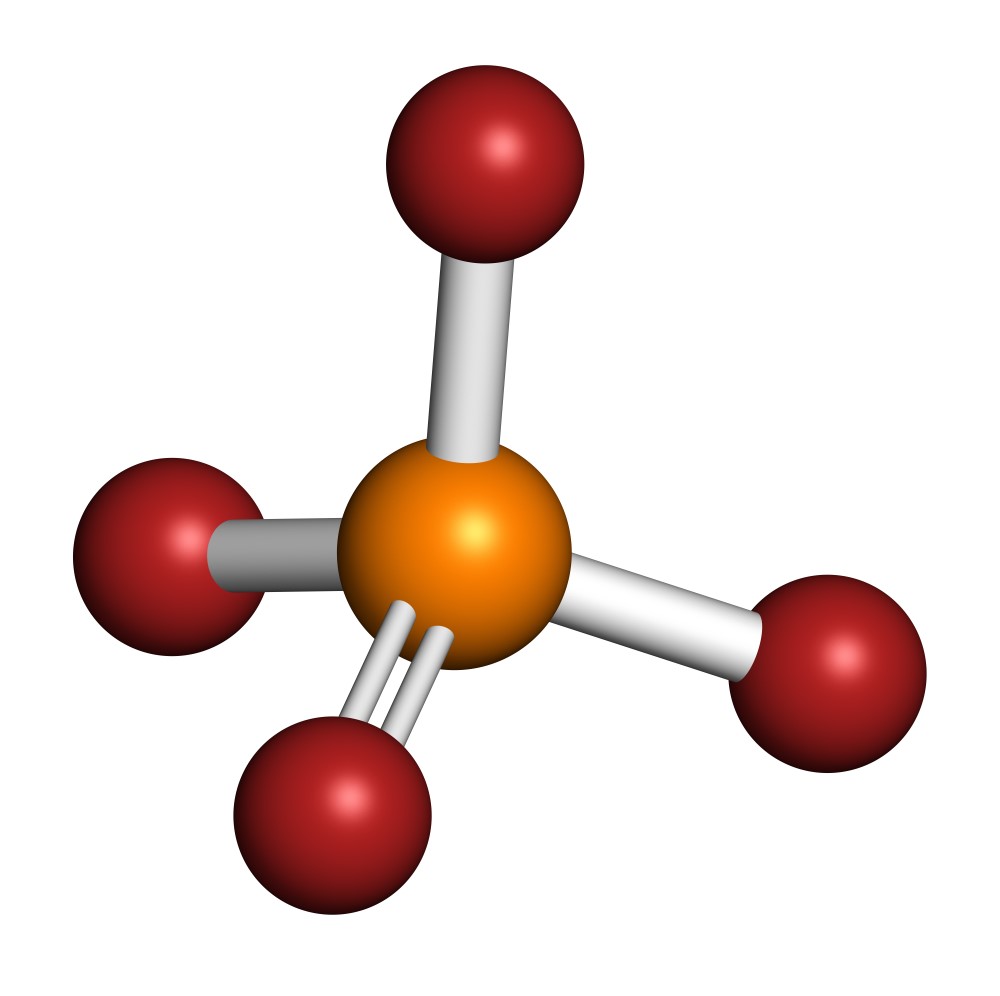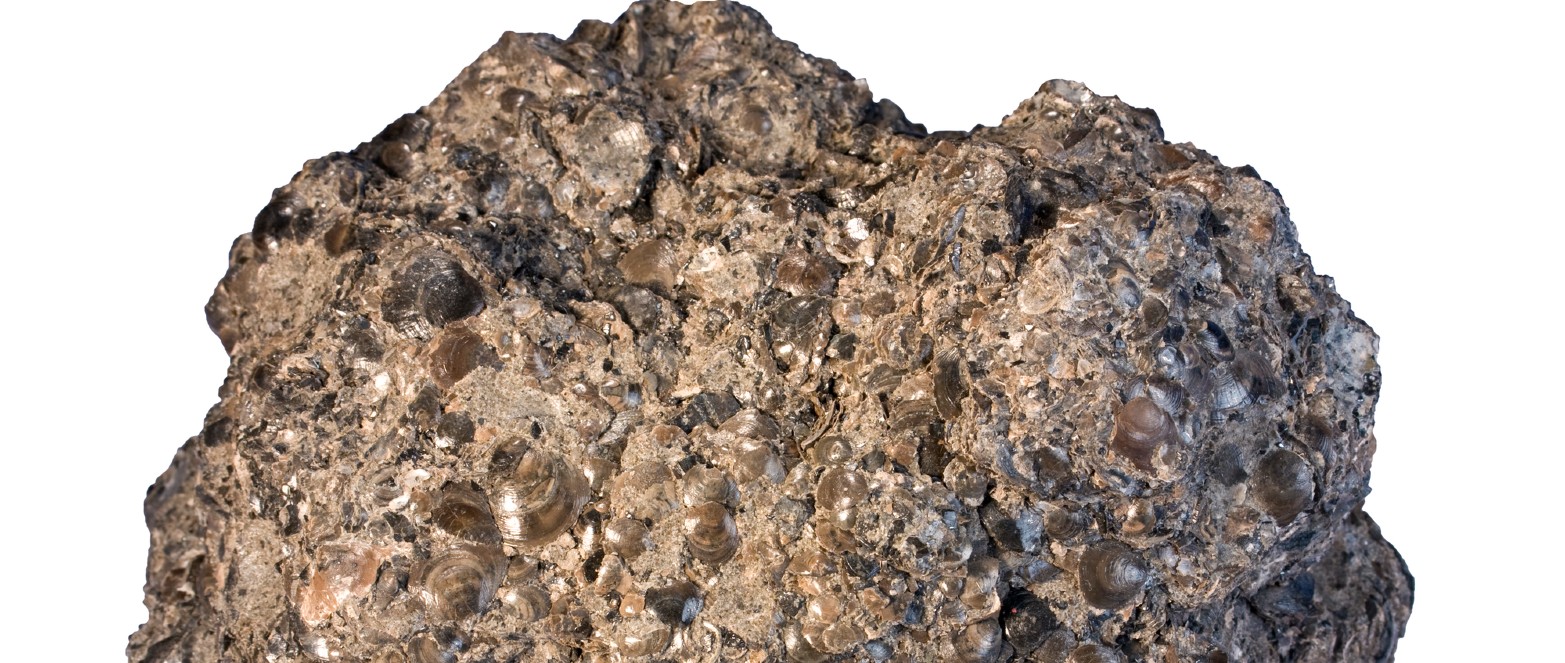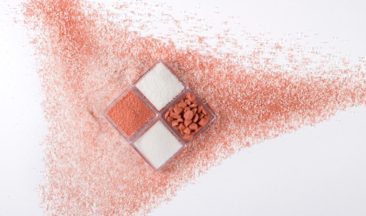Phosphate (PO4) is usually found as calcium phosphate in rock deposits known as apatite and it is a natural source of phosphorus, an element that is essential to life on earth. There is no substitute for phosphorus in human, animal, or plant nutrition and hence in food production. In addition, phosphorus is part of many products used in modern life.
The same phosphate-based compound can be used for different applications in a broad range of industries including:
- Pharmaceutical
- Nutraceutical
- Personal care
- Construction
- Chemical manufacturing
- Renewable energy
- Agriculture.
By the end of the decade, the global phosphate market is expected to reach a value of $88.5 billion. The importance of phosphate to humanity and its value as an industrial product cannot be overstated. As we switch to sustainable agriculture and clean and renewable energy, we’re likely to see many innovative uses for phosphates and a greater global demand for this essential raw material. Continue reading for a detailed view of the vital roles that phosphates and phosphate-based compounds play in industry, agriculture, and human health.
Because of this vital role, the prominent chemist and science writer Isaac Asimov succinctly stated: ‘‘Life can multiply until all the phosphorus has gone and then there is an inexorable halt which nothing can prevent’’
Phosphorus is Essential to Life
Phosphorus is the eleventh most abundant element on the earth. If soils are deficient in phosphorus, food production becomes restricted, unless the nutrient is added in the form of phosphate fertilizers.
Phosphates in Our Bodies
An important occurrence of phosphates in biological systems is as the structural material of bone and teeth. These structures are made of crystalline calcium phosphate in the form of hydroxyapatite in tooth enamel.
Phosphates in Plants
Phosphorus is an essential nutrient required for plant growth. It helps in root development, plant maturation, and seed development. Along with nitrogen and potassium, phosphorus is one of the most important elements for plant life.
Soil gets depleted of phosphorus due to several reasons including being washed away by rain. Therefore, modern farming is reliant on replacing these elements with the products made by the phosphate fertilizer industry.
The phosphate ion gets its name from the central phosphorus atom colored orange in the structure below:

Phosphate is also an important part of adenosine triphosphate (ATP) which is critical for the function of biological systems in animals and plants due to its ability to store and release cellular energy on demand.
But enough of the chemistry. Let’s get back to how it was discovered which is so much more interesting.
The History of Phosphate: The Quest for the Philosopher’s Stone
The elemental form of phosphorus was discovered around 1669 by the German alchemist Hennig Brandt while on a quest to create the Philosopher’s Stone.
In work that would make Harry Potter envious (maybe not the urine bit), Brandt distilled 50 buckets of urine. Through intense heating and distillation, he hoped to create the elusive, legendary ‘Philosopher’s Stone’ that would supposedly turn base metals into gold.

That experiment may have failed but he did discover the pure form of phosphorus, which also glowed in the dark. He named the substance ‘cold fire’, which was later changed to ‘phosphorus’, meaning light bearer.
For a century, urine was the only source of Phosphorus until it was found in bones and processes developed for commercial production in later years.
In 1835, James Murray was issued patents for ‘superphosphate of lime” from bones. Later Phosphorus was found to be a principal constituent of certain igneous and sedimentary rocks and that’s where phosphorus mining was born.
Sources of Phosphates
Phosphate is a sedimentary rock formed from the accumulation of organic matter over millions of years. Phosphate deposits can be found around the world and they are the main source of phosphorus.
ICL phosphates come from a unique integrated phosphate value chain, from phosphate rock mines in the Negev Desert in Israel and in China to value-added downstream production facilities located in Israel, China, Europe, and the USA.
As phosphorus is a finite resource, the EU has put phosphorus rock and white phosphorus on the list of Critical Raw Materials. This means that phosphorus must be recovered wherever possible.
To achieve this recycling and conservation, Waste Water Treatment Plants (WWTP) remove phosphorus from wastewater using chemical or bio-based technologies. This sewage sludge is then subjected to anaerobic digestion, dewatering, and incineration to produce recycled phosphorus.
In the manufacturing sector, phosphorus must be removed from wastewater to meet stringent effluent regulations. At the same time, the recycling of this recovered phosphorus as a fertilizing material can save the costs of sludge disposal and leads to the significant reduction of plant operating expenses.
Other sources are for recycling are solid waste streams such as animal manure and steelmaking slag. Recovering phosphorus from steelmaking slag allows the rest to be reused as raw materials in blast furnaces. This has the enormous potential to improve the resource efficiency of the steelmaking process.
Together with more efficient farming and food management practices, ICL is doing its bit by investing resources to incorporate these phosphorus sources into its production processes. This contributes to making a circular phosphorus economy not only environmentally feasible but also an economic boon.
You may be interested in:
What is Phosphate Used For?
Phosphate derivatives are used in the manufacture of food products, electronics, cosmetics, and beauty products and a range of other industrial products. Phosphate is also used as a key ingredient in the production of essential NPK fertilizers, and phosphate salts, which are used in fertilizers, animal feed, and many industrial applications.
Industrial phosphates
Industrial phosphates are used in a huge range of products. ICL is a leading provider of a large number of orthophosphate, pyrophosphate, and polyphosphate specialty products used in the dental market (toothpaste and other products), industrial and institutional cleaning products, oil drilling, mining, metal treatment, leather processing, construction, ceramics, and paints and coatings.
These phosphate additives provide many unique functions, such as:
- Abrasion
- Water softening
- Precipitation
- pH buffering
- Rheology control
- Surface wetting
- Pigment dispersion
- Retardation
- Cure
- Corrosion resistance
- Fire protection
- Adhesion
- Pigment suspension
- Foam elimination
- Silicate-based paint formulation stabilization
Another innovative use of ICL’s phosphates is in the manufacture of mono ammonium phosphate (MAP) which is used in the production of lithium iron phosphate (LFP) batteries which are well suited for electric vehicles and other energy storage.
LFP batteries currently account for 23% of the global lithium-ion battery market and are one of the fastest-growing sectors in this industry. LFP battery chemistry is the most affordable option with the additional advantages of high-cycle life and safety.
The raw materials for LFP batteries do not come from conflict zones which align with ICL’s commitment to global stability and sustainability.Market analysts predict a value of $5 billion by the year 2030 for LFP batteries with Tesla announcing that it’s in the process of moving all its standard range vehicles over to lithium-ion phosphate battery chemistry on a global basis.
Phosphate additives in food
Food-grade phosphates are used extensively in the food processing industry and serve a myriad of functions.
They can be used as buffers, gel accelerants, acidulants, anticaking, cryoprotectants, to thicken foods, and maintain structure such as in mashed potato mixes; to assist in curing and preserving meats, cold meats, and deli cuts.
Phosphates are also used to improve texture in dairy, beverages, meat, bakery, and alternative protein products. Further uses in food technology are in commercial baking as a leavening agent of bread, cakes, muffins, pancakes, and doughnuts.
Phosphates are also used in cheese manufacturing to improve stretch, melt, and creaminess among others. Another important use of phosphates is to extend shelf life in meat, dairy, and beverages.
Phosphate fertilizer industry
NPK fertilizers, which contain nitrogen, phosphorus, and potassium, are the largest group of plant fertilizers and are essential for healthy plant growth in different proportions and are also called compound fertilizers.

The global NPK Fertilizer market is expected to reach 49,950 million USD by the end of 2026, growing at a CAGR of 2.8% during 2021-2026.
There are many types of NPK products based on different nutrient recipes and they are often customized to best suit the needs of a specific crop or parcel of land.
Phosphate Esters
Like most functional groups, phosphate esters occur in a diverse range of forms, with important examples including key biomolecules such as DNA, RNA, and ATP, as well as many insecticides, herbicides, nerve agents, and flame retardants.
Since the discovery of their excellent anti-wear and fire resistance properties in the 1940s, the use of phosphate esters by industry has steadily increased. ICL manufactures a wide range of phosphate esters, widely used in various products such as flame retardants, plasticizers, and performance additives for engine oil.
Uses of Phosphate Esters
We are a world leader in promoting change to more sustainable modern phosphate ester products.
ICL manufactures a range of self-extinguishing phosphate ester fluids that are used in special hydraulic and lubricant applications dictated by fire risk considerations, often in power plants and hot metal manufacturing. Our phosphate esters are also used as functional additives in industrial and aviation fluids.
ICL Fyrequel – Non-Aqueous Fire resistant Fluids
Fyrquel® fluids are made from phosphate esters and are non-aqueous fire-resistant fluids used in critical industrial applications.
Other phosphate esters are incorporated into everyday items like furniture and household items as flame retardants and can be phosphate coated onto almost any surface.

Creating impact for a sustainable future
ICL is a leading research-based specialty minerals company that creates impactful solutions for humanity’s sustainability challenges in the global food, agriculture, and industrial markets. We manufacture a wide range of essential phosphate, potash, and a variety of fertilizers.
We are constantly developing new and sustainable technologies to provide, among others, farmers, growers, food producers, and fire retardants manufacturers with a wide variety of our phosphate-based products to provide solutions for global food and technology requirements in a sustainable and environmentally friendly manner.







